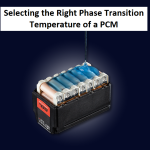Advancing the Evolution of Car Audio with Vibro-Acoustic Technology
Listening to music while driving has become an integral part of our daily routine. Yet, seldom do we consider the quality of our audio experience or explore ways to enhance it. Many enthusiasts invest in costly sound systems for their vehicles, but these systems often come with drawbacks such as high cost, increased electrical consumption, and added weight.
To revolutionize the in-car audio experience, we introduce Vibro-Acoustic or Augmented Audio™ Technology for car infotainment systems. But what exactly is Augmented Audio™, and how does it work? This innovative technology, developed by Jukka Linjama in Finland, features patented speaker actuators that utilize near-field audio and specialized sound transmission layers as shown in Fig1. resulting in personalised sound sphere (Deep Immersion Zone). Unlike traditional speaker element, these actuators emit both sound and vibration, allowing users to not only hear but also feel the music’s rhythm and bass. Originally designed to provide therapy for autistic children and later adopted in cinema seats, Flexound technology is now poised to transform car audio systems.
This technology not only improves user experience but also addresses key concerns in electric vehicles. By replacing bulky subwoofers and reducing power consumption, Flexound vibro-acoustic actuators contribute to weight reduction and energy efficiency. Moreover, they cover the entire audio spectrum (20Hz to 20KHz), giving a rich audio experience while minimizing electricity usage as technology consumes nominal of only 6W per speaker.

Fig 1. Flexound vibro-acoustic nearfield speaker implementation in a seat with embedded Elastic vibrating element (EVE).
The implementation of this technology in cars is straightforward. Speakers are integrated into the seats, either on the headrest or backrest, depending on the seat design and user preference as shown in Fig 2. The sound elements, along with supporting components, are strategically arranged to transmit vibrations throughout the entire seat including seat base and back, creating a truly immersive experience.

Fig 2. Flexound Augmented Audio™ Implementation examples/alternatives in seat; Headrest or Backrest Integration
In the automotive industry, as OEMs introduce new features, Flexound technology can complement these advancements in various ways, enhancing the immersive experience as illustrated in Fig 3.
- Enhanced ADAS Functions: Instead of traditional dashboard alerts, drivers can receive immediate audio and vibration signals, enhancing safety features like AEB and LKAS.
- Simulated Experience in EVs: Electric vehicles, lacking traditional engine vibrations, can simulate the driving experience using Augmented Audio™ technology.
- Sound Massages: Low-frequency music and dedicated vibroacoustic audio signals can be used to alleviate stress and fatigue, offering a soothing experience during long drives.
- Integration with Car Head Unit: Integration with the car’s head unit enables hands-free phone calls and personalized music experiences for each passenger.
- Personalized Audio Experience: Individual passengers can enjoy their preferred music without disturbing others in the vehicle.

In conclusion, Flexound Augmented Audio™ Technology redefines in-car audio systems, offering unparalleled immersion and efficiency. As Albert Einstein said, “Make everything as simple as possible, but not simpler.” With Flexound, simplicity meets innovation, ushering in a new era of automotive audio excellence.
If you would like to explore this technology for your range of vehicles, please contact response@quanzen.com



